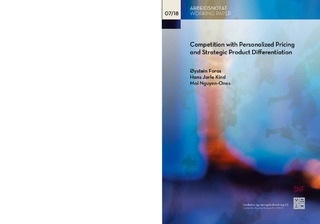| dc.description.abstract | Consumers leave increasingly more digital footprints which improve Örmsíability to practice personalized pricing (Örst-degree price discrimination). We ask whether there
exist strategic e§ects that reduce Örmsíincentives to do so. To answer this question, we Örst
note that it is optimal for a Örm that price discriminates to set the purchasing price equal to
marginal costs from consumers who buy from a rival. This is true independently of whether
the rival has made any non-price commitments (e.g. strategic product di§erentiation). In
contrast, if a Örm uses uniform pricing, the rival has incentives to make strategic commitments that soften competition. Consequently, we Önd that Örms might Önd it optimal
to commit to uniform pricing to avoid being trapped in a highly competitive equilibrium.
The key insight is that a Örmís incentives to undertake strategic price-softening behavior
depend on the rivalís choice between uniform and personalized pricing, and not the Örmís
own choice. | nb_NO |
